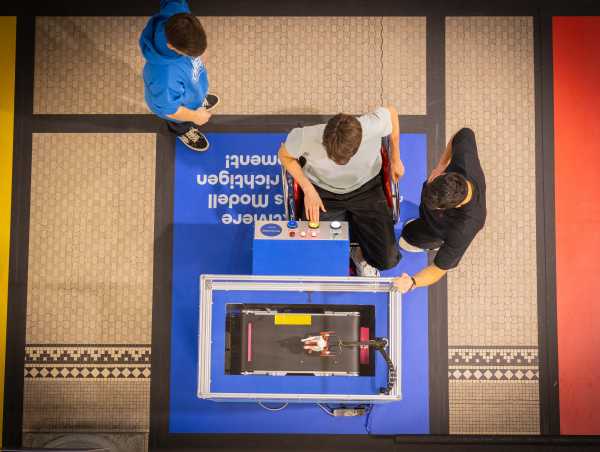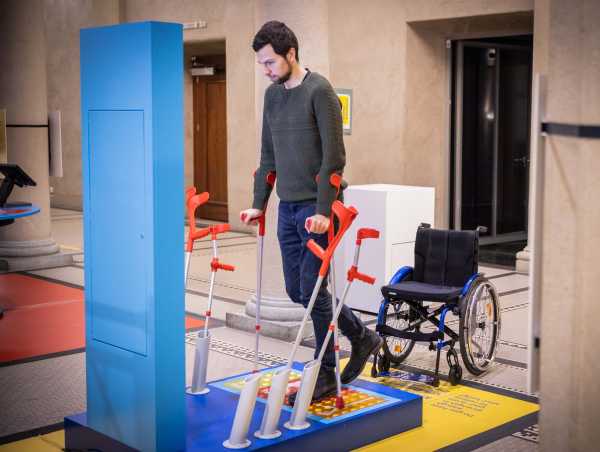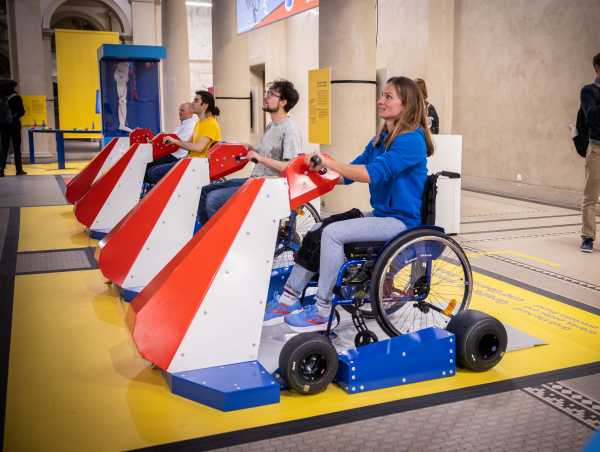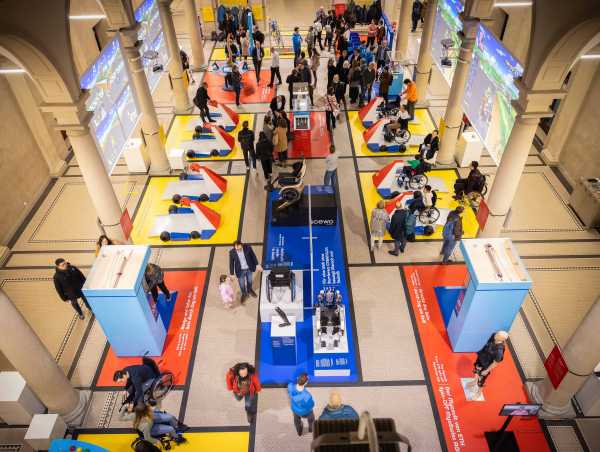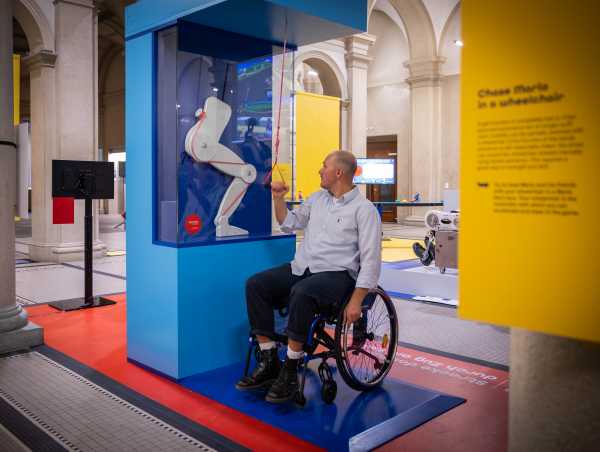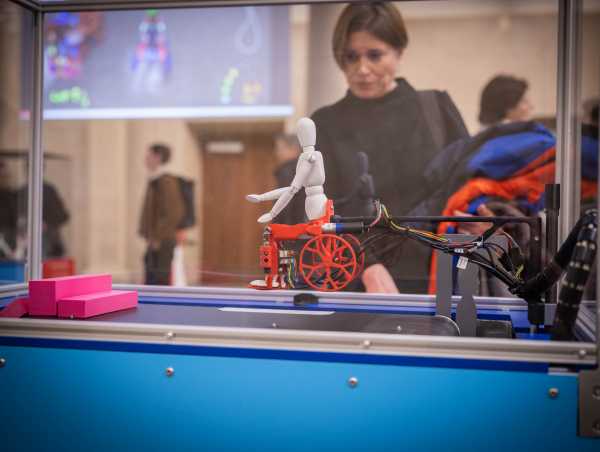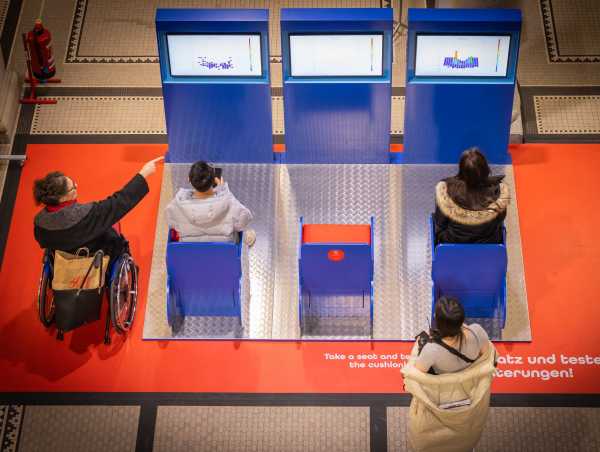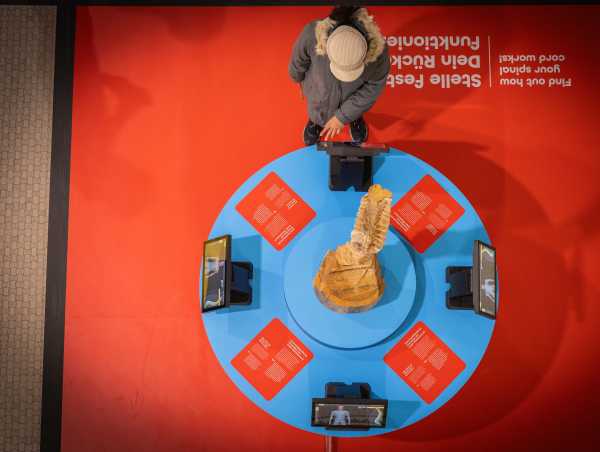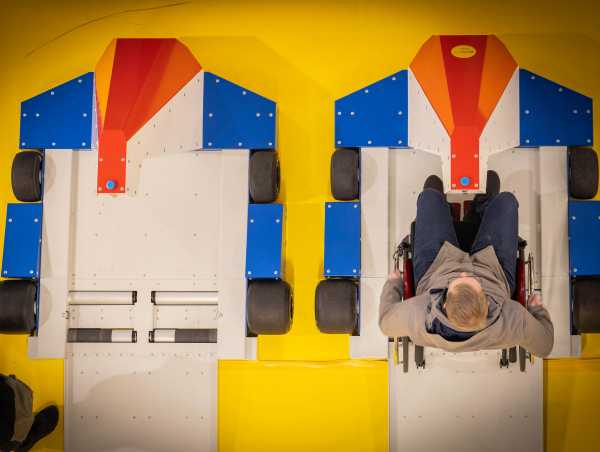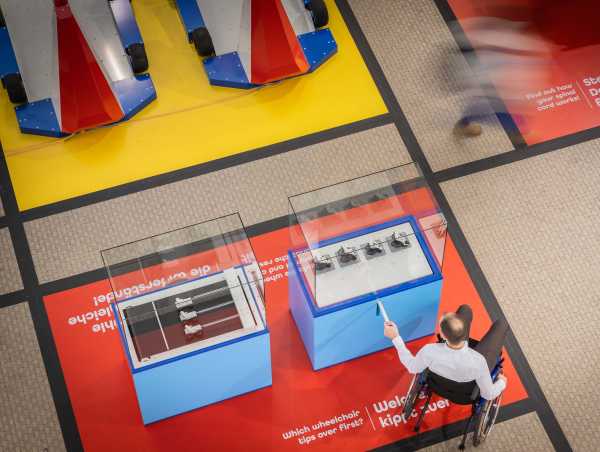Exhibition Mobility & Inclusion
Concept
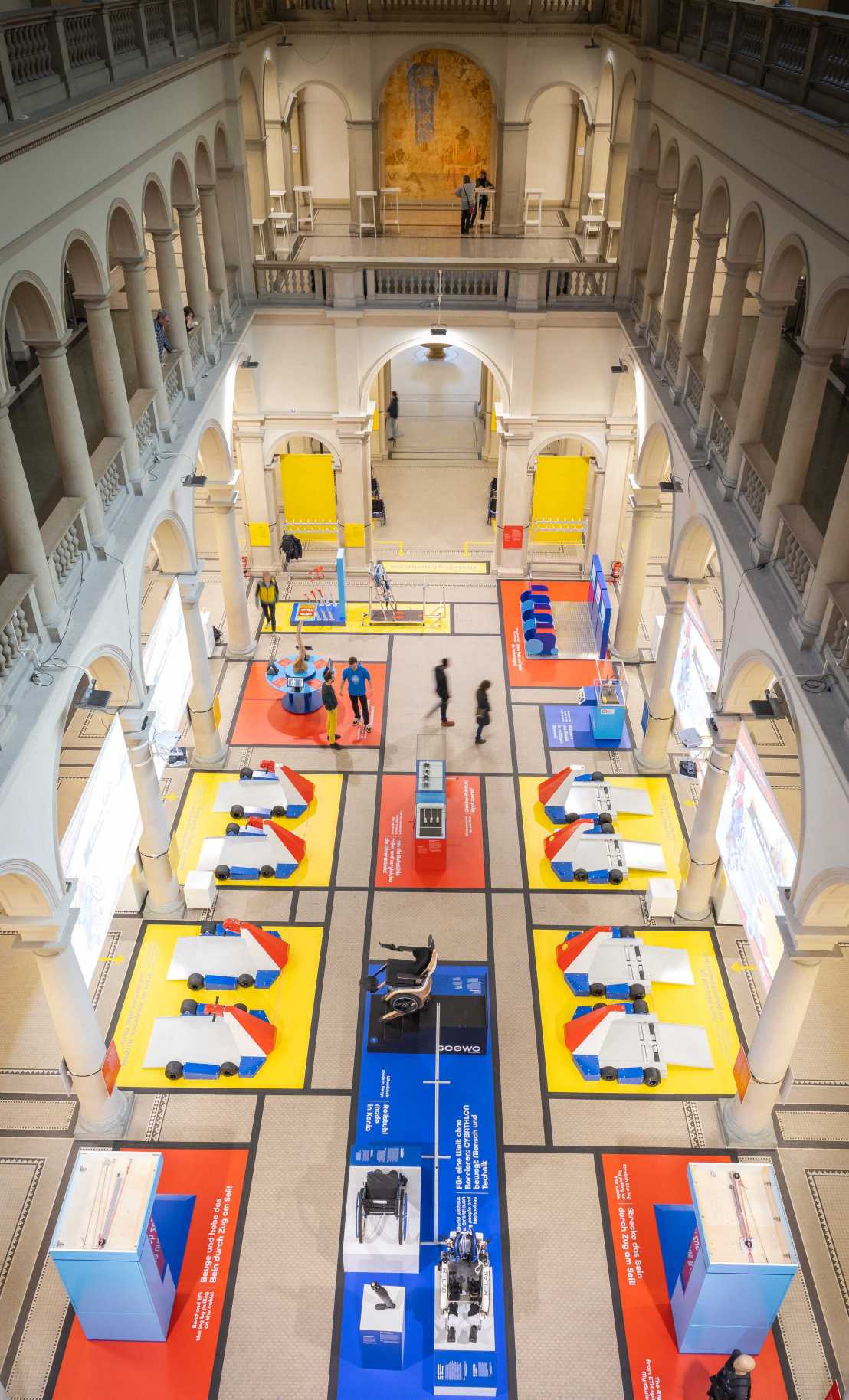
People with impairments face barriers that exclude them from society. Physical and communicative barriers can be partially overcome by means of technology. However, even simple technologies are not equally available everywhere. In addition, organizational hurdles and interpersonal barriers remain, which make inclusion more difficult.
This exhibition explains which everyday activities can be impaired, for example by a spinal cord injury, and highlights shortcomings. Technical solutions that can partially compensate for these impairments and help to promote equal opportunities and self-determination, are presented in a playful way. It provides insights into the lives of people with disabilities and their daily challenges. In doing so, this exhibition tries to contribute to a more inclusive society.
The Exhibition
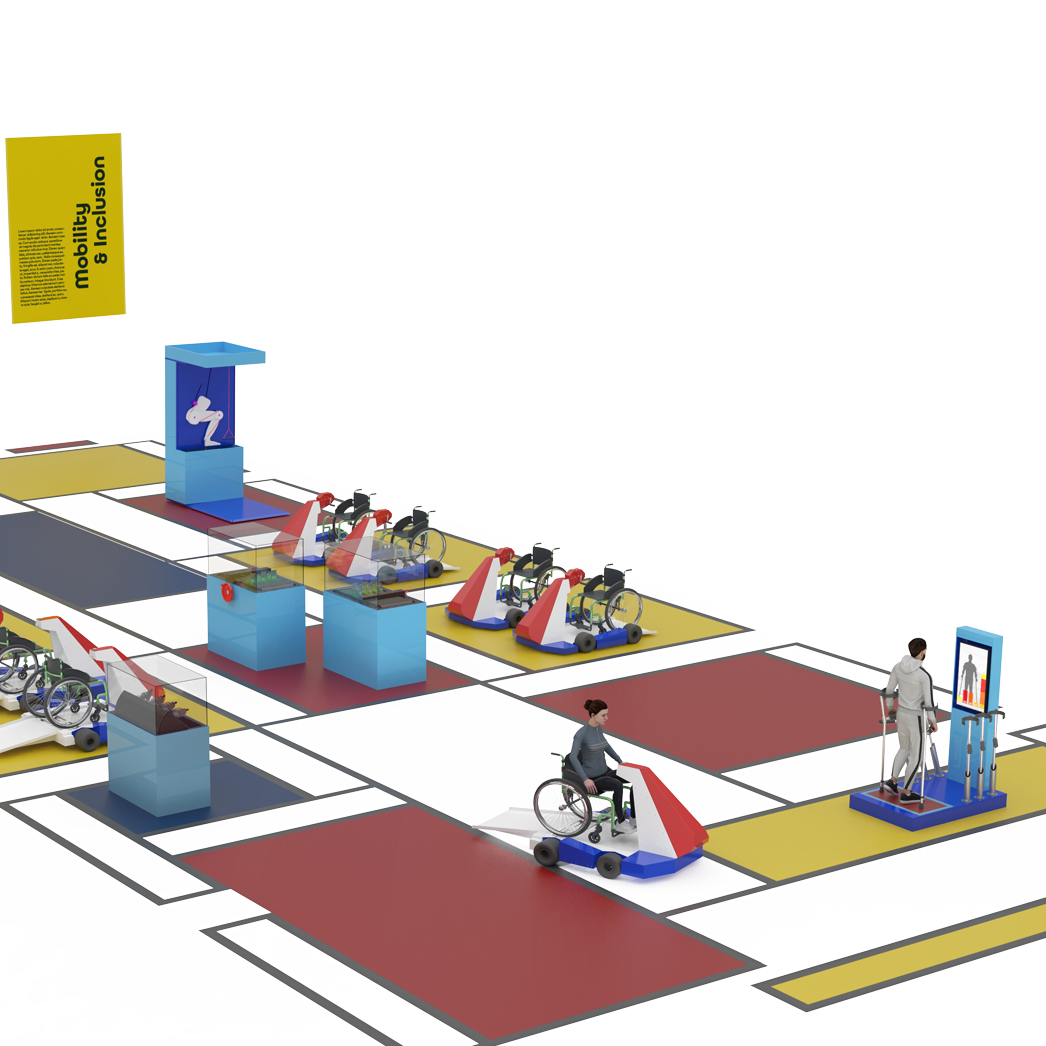
"Mobility & Inclusion" took place from Monday, 12 to Tuesday, 27 February 2024 in the main hall of ETH Zurich.
The displays will then travel around Switzerland for various events and exhibitions. First, they will go to the Technorama, Winterthur. From autumn 2024, they will be on display for several months at the ParaForum visitor centre of the Swiss Paraplegic Foundation in Nottwil, Switzerland, before finally arriving at the Swiss Museum of Transport in Lucerne in 2025 for the permanent "MovAbility" exhibition.
This exhibition was inspired by CYBATHLON, a competition for people with physical disabilities. The participating "pilots" are allowed to use robotic technology to better manage activities of daily living. A CYBATHLON platform has emerged from the competition, which promotes technology development and inclusion. The next CYBATHLON will take place in Kloten, Zurich, from 25 to 27 October 2024.
Anatomy Table Paraplegia
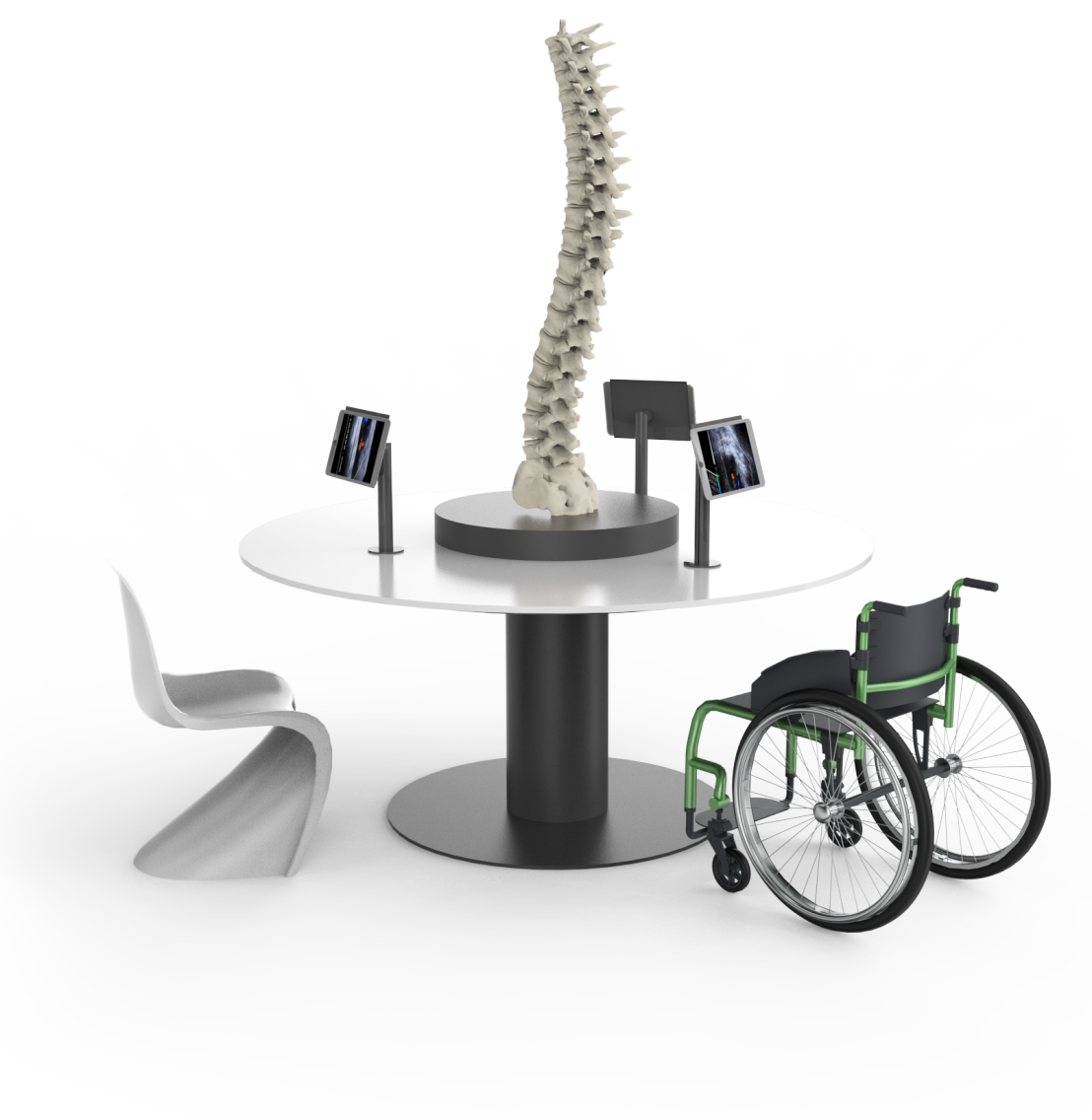
We need our spinal cord to function
The spinal cord transmits movement information between the brain and the muscles. It also orchestrates our reflexes. If the spinal cord is injured, movements can no longer be carried out smoothly. The level and severity of the injury determine which bodily functions and everyday activities a person can still carry out.
Use the touchscreen to determine which bodily functions are restricted in the case of paraplegia or tetraplegia, depending on the level of injury. What does this mean for the patient's everyday life? This anatomy simulator provides information on what is still possible independently and where support is required.
Balance-Demonstrator
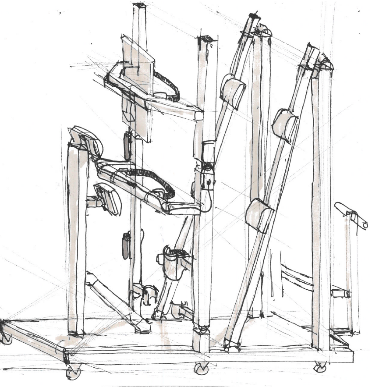
Balancing is a challenge
Minor perturbations of our balance can be corrected by moving the ankles, but major perturbations require compensatory movements from the hips. If this is not enough, only a lunge can prevent us from falling. People with physical impairments often no longer have these compensatory options. Crutches, walkers, and other mobility aids can help reduce the risk of falling and improve mobility.
Step in and test how well you can balance your body over ankles or from the hips without falling over.
Crutches-Demonstrator
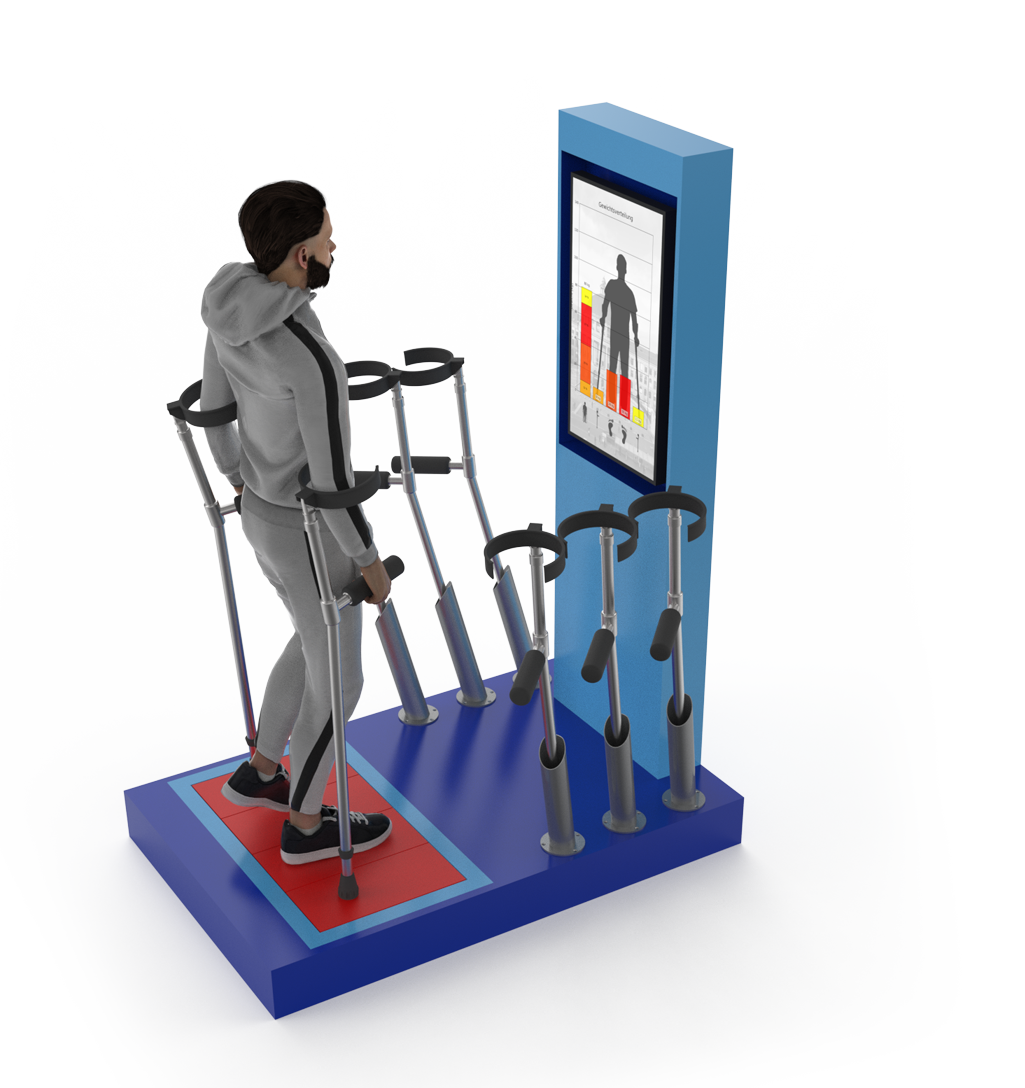
Crutches relieve your legs
Crutches, canes, and walkers increase the standing surface, thereby increasing the stability and reducing the risk of falling. At the same time, they take the weight off the legs, which can be weak after an injury or illness. However, the supporting forces must be exerted by the arms, which can quickly lead to fatigue. In the long term, this strain can damage the shoulder and elbow joints and lead to pain.
Take two crutches and stand on the metal plates. Try to take the weight off one leg first, then your whole body, partially and then completely.
Mario Kart: Wheelchair Ergometer Version
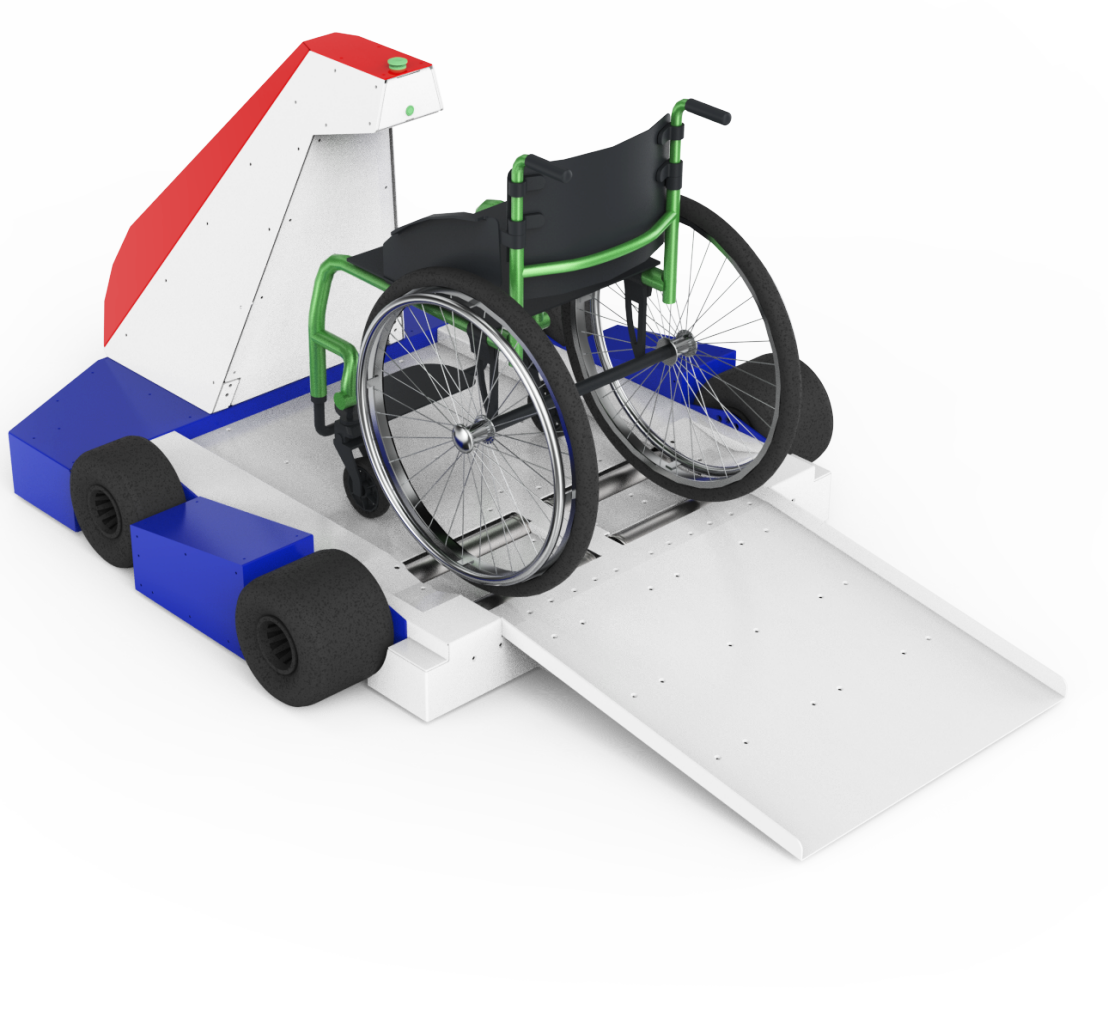
Chase Mario in a wheelchair
If gait function is completely lost or if balance and endurance are no longer sufficient, mobility can be partially restored with a wheelchair. If the function of the hands and arms is still reasonably intact, the driver can propel the wheelchair wheels manually using hands and arms. This requires a great deal of strength and skill.
Try to beat Mario and his friends with your wheelchair in a Mario Kart race. Your wheelchair is the controller with which you can accelerate and steer in the game.
Mario Kart: Handbike Version
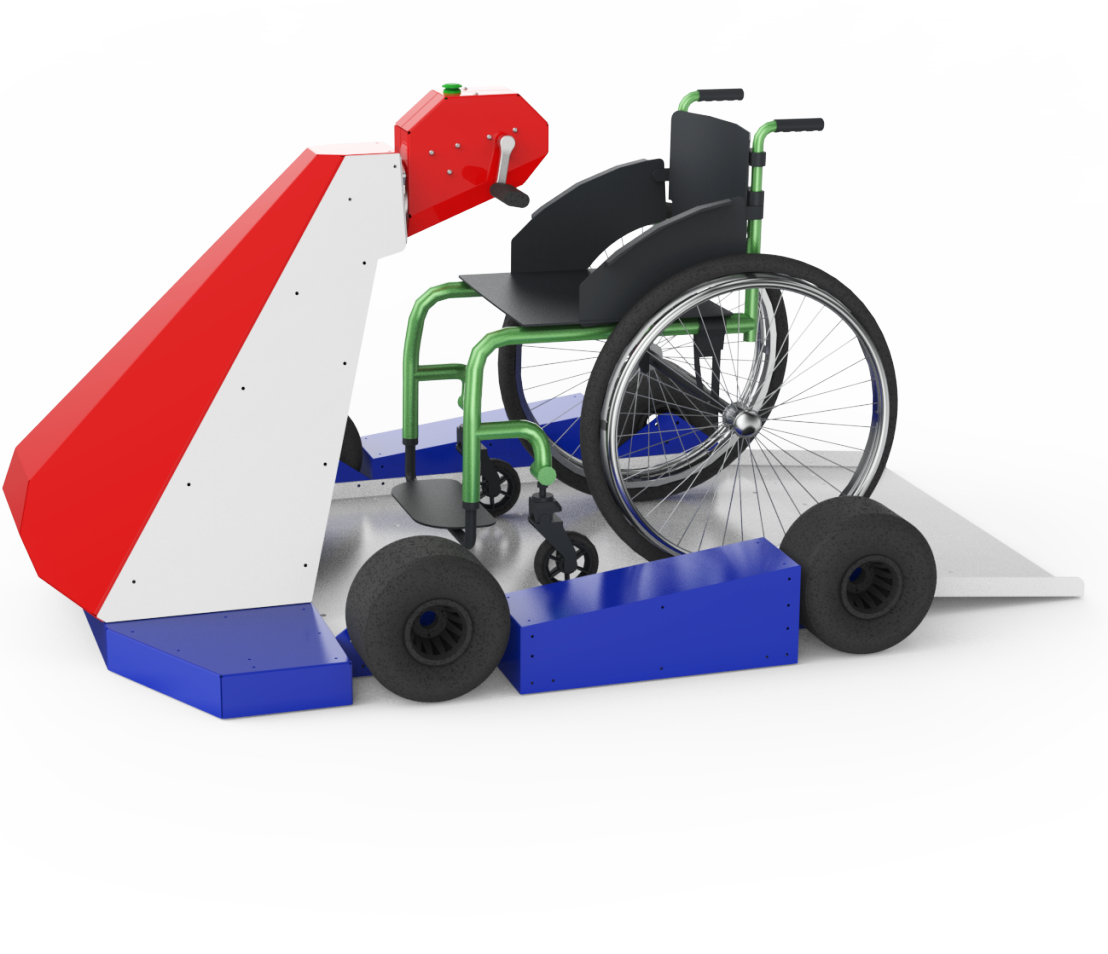
It's faster with a handbike
Many wheelchair users prefer handbikes for sporting activities. With handbikes, the rider can propel the wheelchair using a hand crank. Although this allows higher speeds to be achieved than with traditional manual wheelchairs, the vehicles are bulkier and less agile. Handbikes are, therefore, primarily used outdoors or in large sports halls.
Try out a race to see if you stand a chance against Mario and his friends on a handbike. Use the hand crank to accelerate and tilt them sideways to steer your vehicle in the game.
Cushion Demonstrator
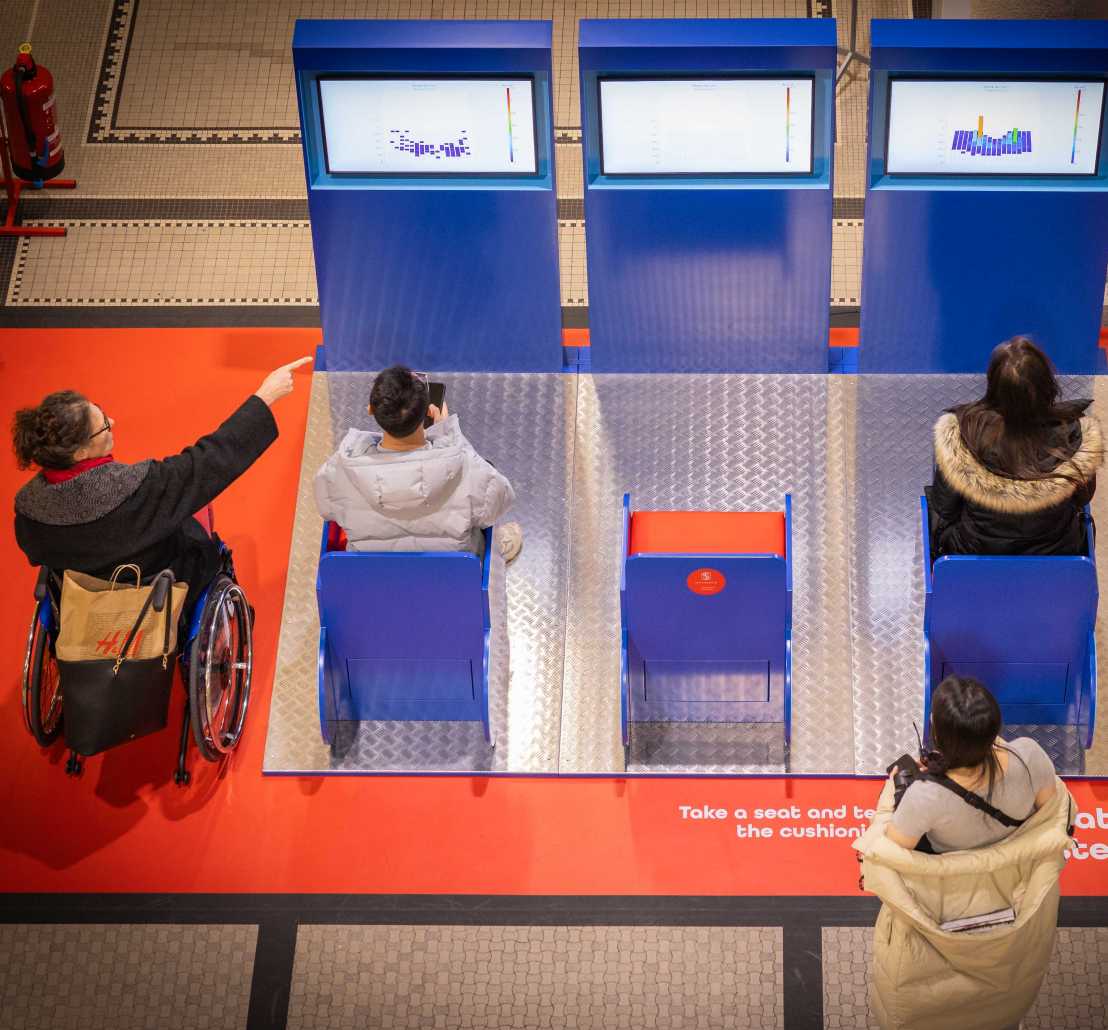
The softer, the healthier
Sitting in a wheelchair for long periods reduces blood flow to the skin and muscles in the buttocks, which can lead to pressure sores or "decubiti". A soft seat cushion is, therefore, extremely important for prevention, as it distributes the pressure more evenly than a hard cushion. Even a small fold in the seat cushion or trousers can lead to pressure sores, which are usually recognised too late and are difficult and time-consuming to treat.
Take a seat on the different red cushions and compare how their firmness feels and affects your pressure distribution.
Wheelchair tipping
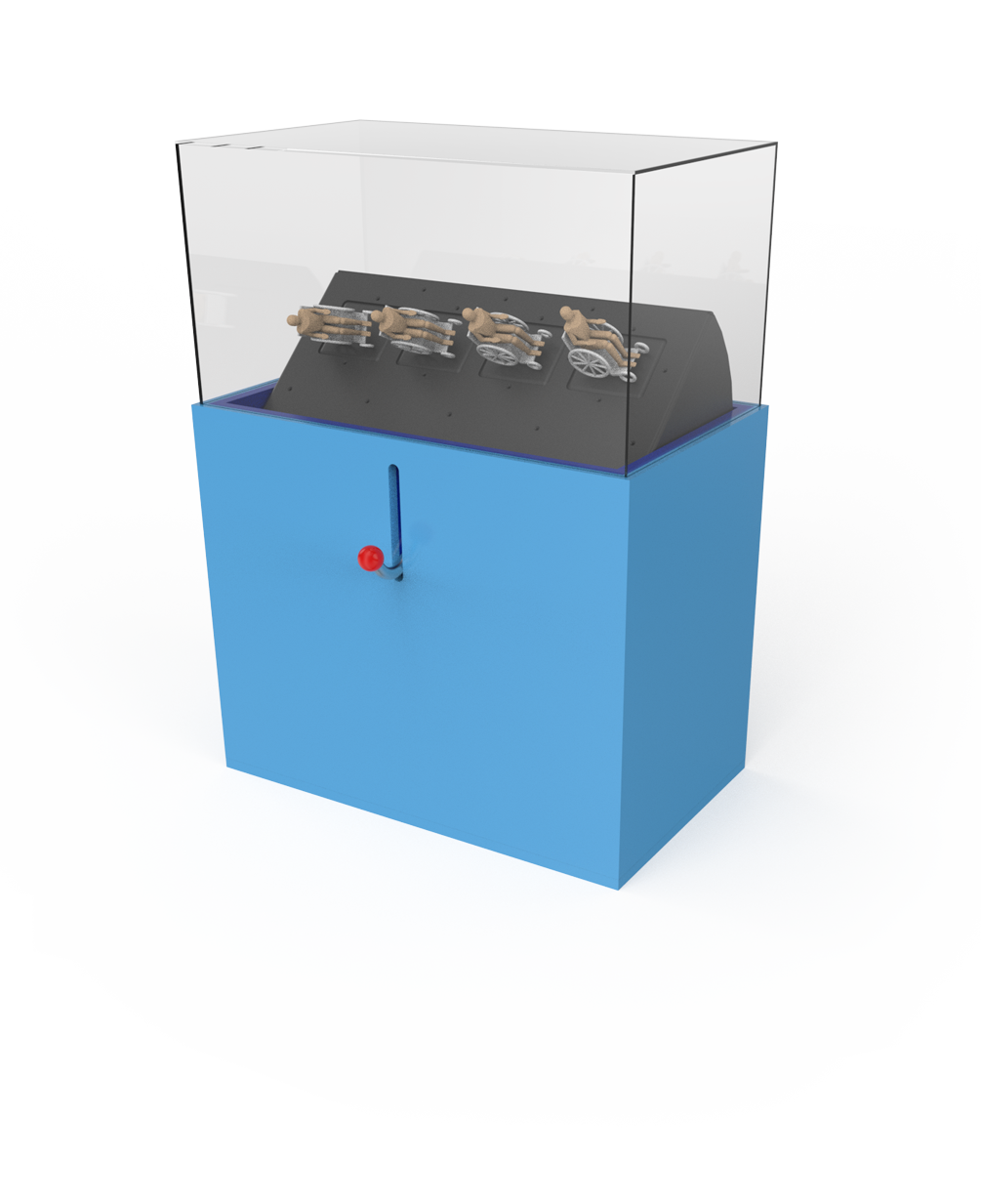
Please don't tip
If you turn the curve too quickly, the wheelchair can tip over. A good tipping stability of the wheelchair is important to prevent injuries from falling. The tipping stability depends on the seat height and, thus, on the height of the centre of gravity of the wheelchair user and wheelchair. The track width of the wheelchair wheels is also relevant. Four-wheeled wheelchairs have an advantage over three-wheeled wheelchairs. In short: The lower and wider the wheelchair, the more stable it is when navigating around corners.
Tilt the platform and check which wheelchair tips first.
Resistance Force Demonstrator
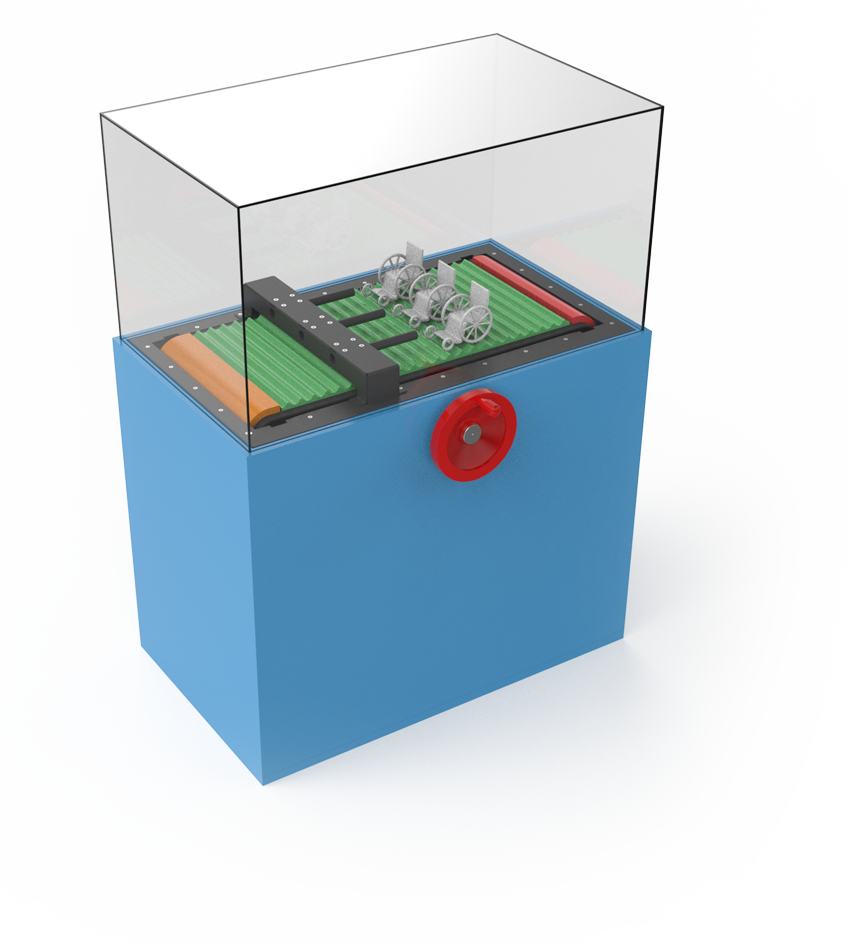
It rolls and rolls and rolls …
The rolling behavior of wheelchairs depends on the conditions of the surface and the wheels. Steps, curbs, and other uneven surfaces as well as stony and sandy surfaces require higher driving forces than flat surfaces. If the wheels are small and soft, even greater forces are required from the user or the motor. With manually powered wheelchairs, this leads to even more rapid fatigue or joint overuse in the shoulders, arms, and hands.
Move the treadmill and you will see which surfaces and wheel sizes lead to higher resistance forces.
Games Console OST-University
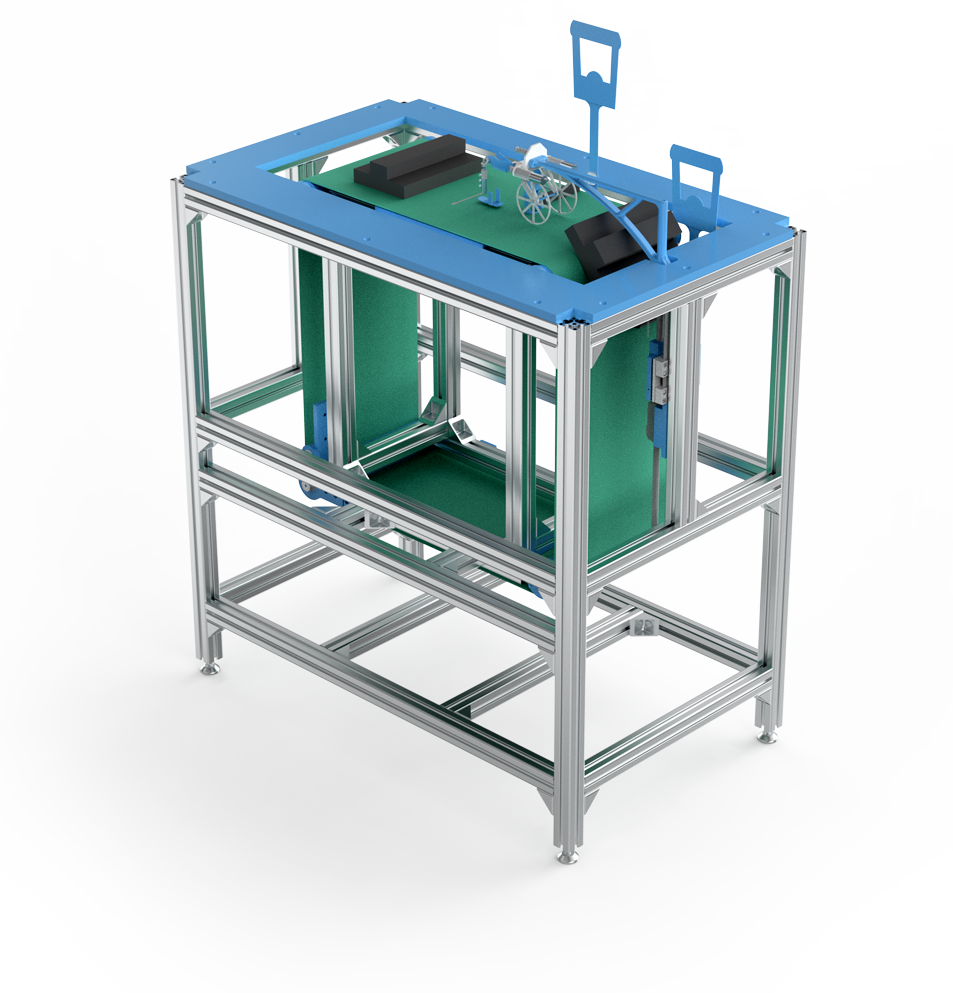
Roll and walk with one device
The OST-University of Applied Sciences in Rapperswil has developed the novel mobility aid, ”Enhanced Hybrid”, which combines the benefits of wheelchairs and exoskeletons within one single device. While the wheelchair function has its advantages on flat terrain, the exoskeletal function allows one to overcome obstacles such as steps and stairs and fosters face-to-face conversations.
Start the game by pressing the green button. With the three action buttons you can lift the miniature model of the “Enhanced Hybrid” and step over obstacles or stairs. After three mistakes the game is over.
Exoskeleton Flexion
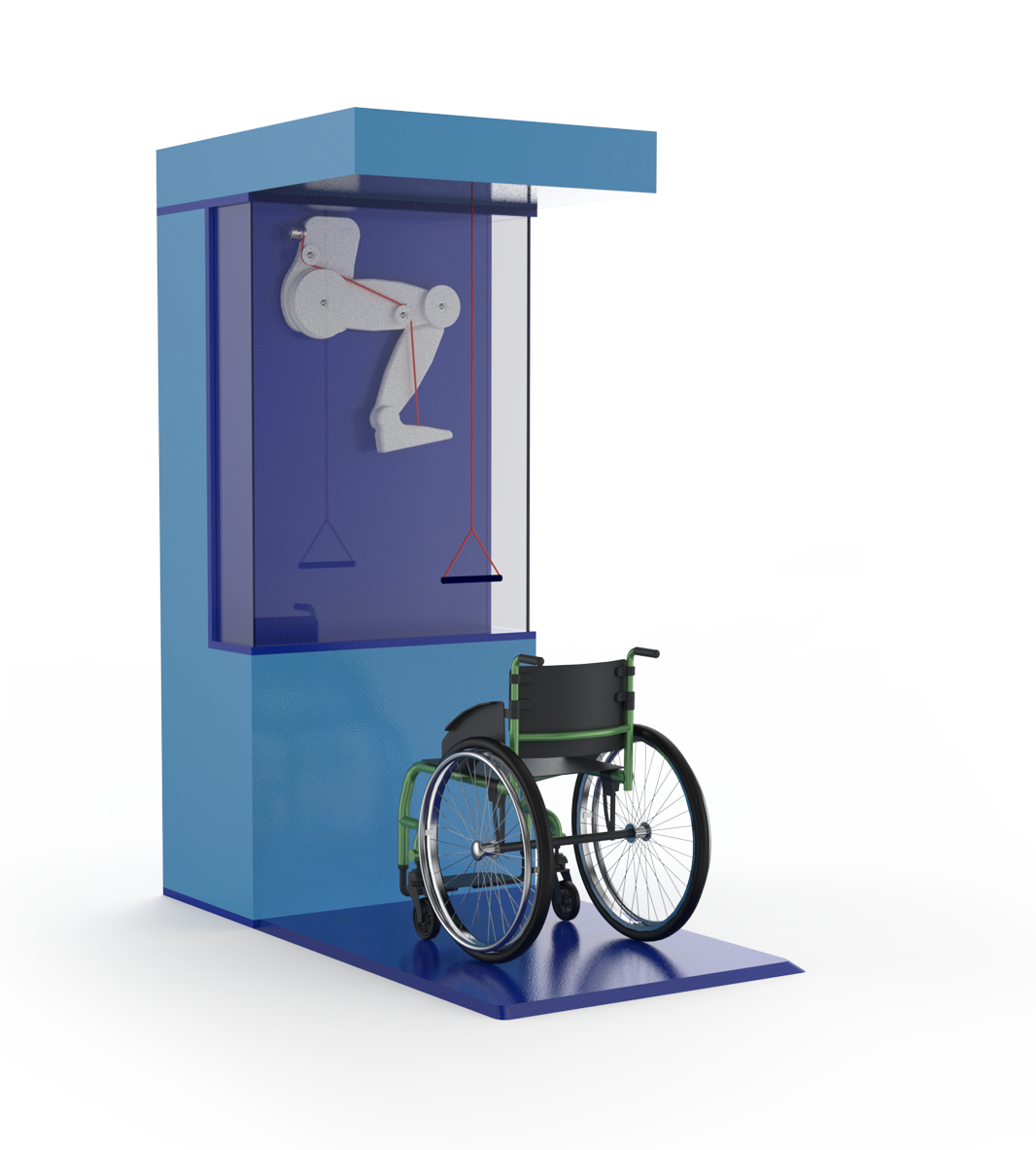
Bend the leg to swing
Different muscle groups can work together in such a way that they help the hip, knee, and ankle joint to bend at the same time. This so-called "flexion synergy" is important for lifting the leg while walking and swinging it forwards. In an artificial exoskeleton, cables can be routed in such a way that they generate this flexion synergy when the cables are shortened by a motor. The motor can be placed at the upper end (back) or lower end (foot) of the cable.
Pull the handle to bend the leg and lift it off the ground.
Exoskeleton Extension
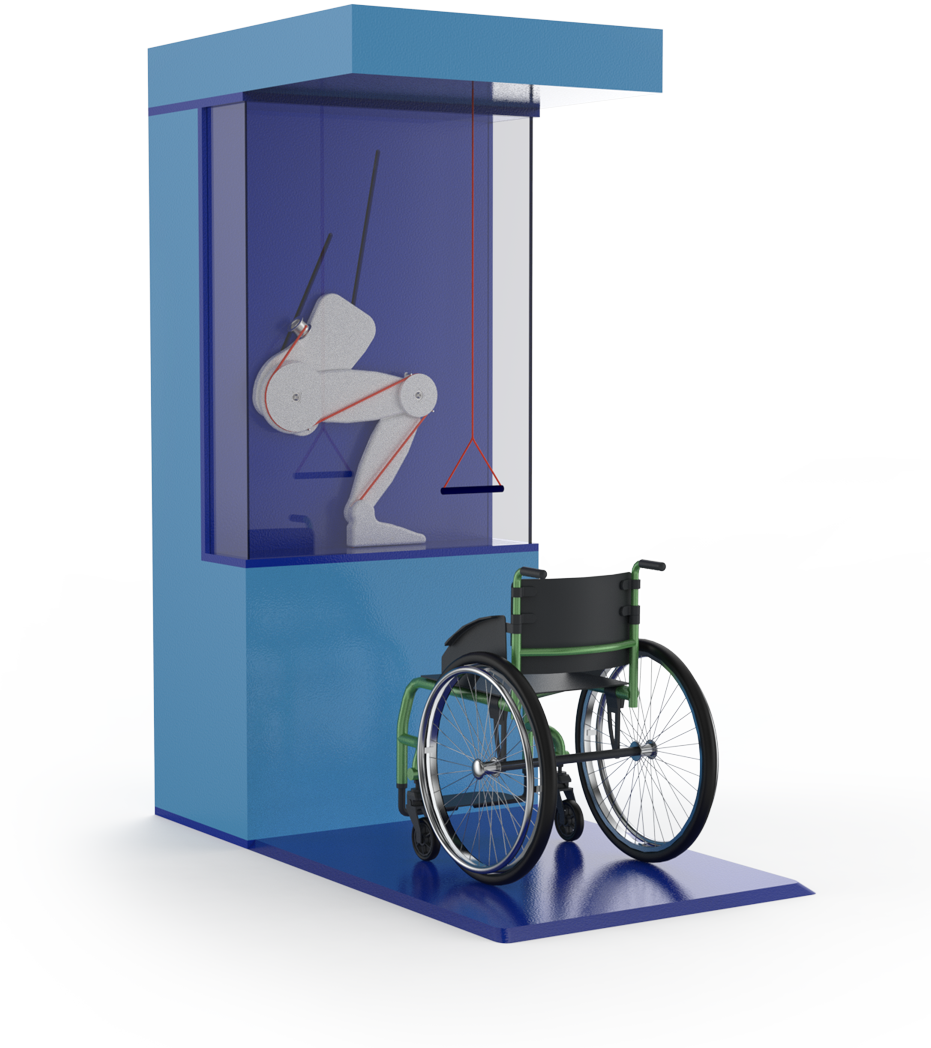
Extend the leg for the stance
Different muscle groups can work together in such a way that they help the hip, knee, and ankle joint to extend at the same time. This so-called "extension synergy" is important to straighten the body against gravity or to keep the leg extended during the stance phase of gait. In an artificial exoskeleton, cables can be routed in such a way that they generate this kind of stretch synergy when the cables are shortened by a motor. The motor can be placed at the upper end (back) or lower end (foot) of the cable.
Pull the handle to stretch the leg and straighten the body.
Myosuit
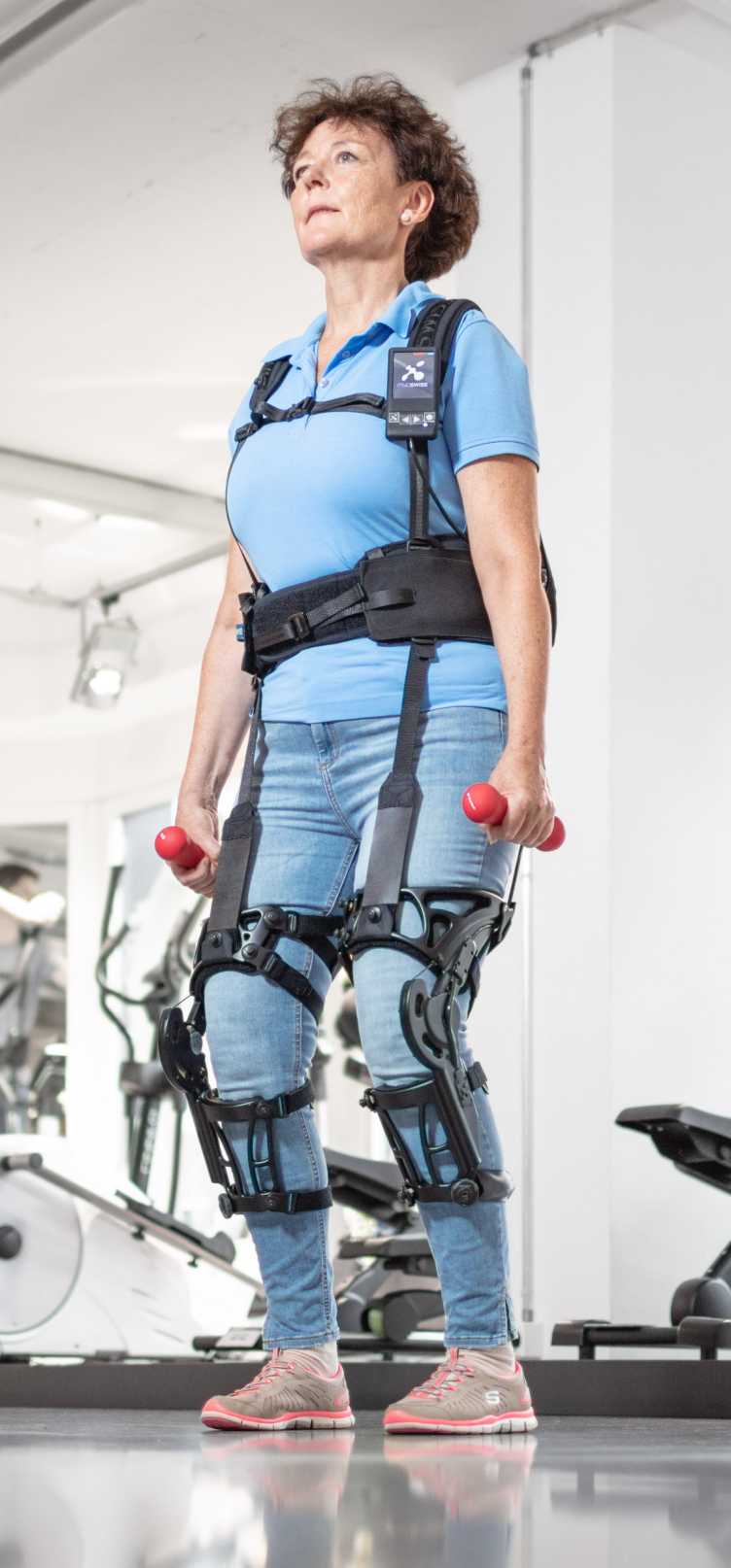
An artificial muscle as a walking aid
The Myosuit from the ETH Zurich spin-off "MyoSwiss" consists of an artificial muscle attached on the outside. This supports people with muscle weakness to stand up, stand, walk, climb stairs, and sit down. A cable is shortened in such a way that it supports the extension of the hips and knees, making everyday movements easier for the user. One cable per leg runs from the back, behind the hip, then in front of the knee and down to the lower leg.
The Myosuit is applied for therapies in rehabilitation centres. Some owners also use it at home or outdoors to enable them to stand and walk for longer periods.
Inclusion Game
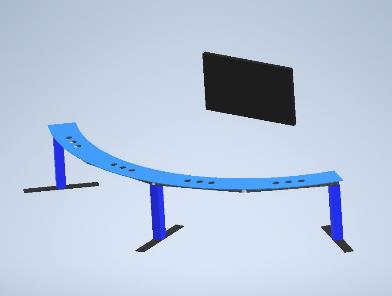
Did you know that?
People with physical impairments don't just have to cope with the fact that their mobility is limited. Dysfunctions of bladder and bowel, the cardiovascular system, sensory perception, sexual function, and communication problems are often a much bigger hurdle in their lives. In addition, people with disabilities are often forgotten by society or even deliberately discriminated against. This often makes an equitable inclusion in education, work, and leisure impossible.
Test your knowledge in this game and compete with your friends.
Varileg
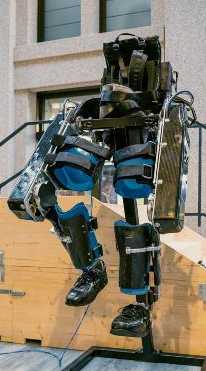
An exoskeleton for people with paraplegia
People can move their joints, but also modulate their stiffness. This improves stability and reactive behavior during standing, walking, stair climbing stairs, or when interacting with objects that impact on the body from outside. The VariLeg exoskeleton was developed from RELab and pd|z at ETH Zurich to restore gait for people with paraplegia. Additionally, it can adjust the stiffness of its knee joints to flexibly adapt to different situations and make walking more robust and save.
Pilot Philipp Wipfli used VariLeg at CYBATHLON 2016 to compete in the exoskeleton race.
Scewo BRO
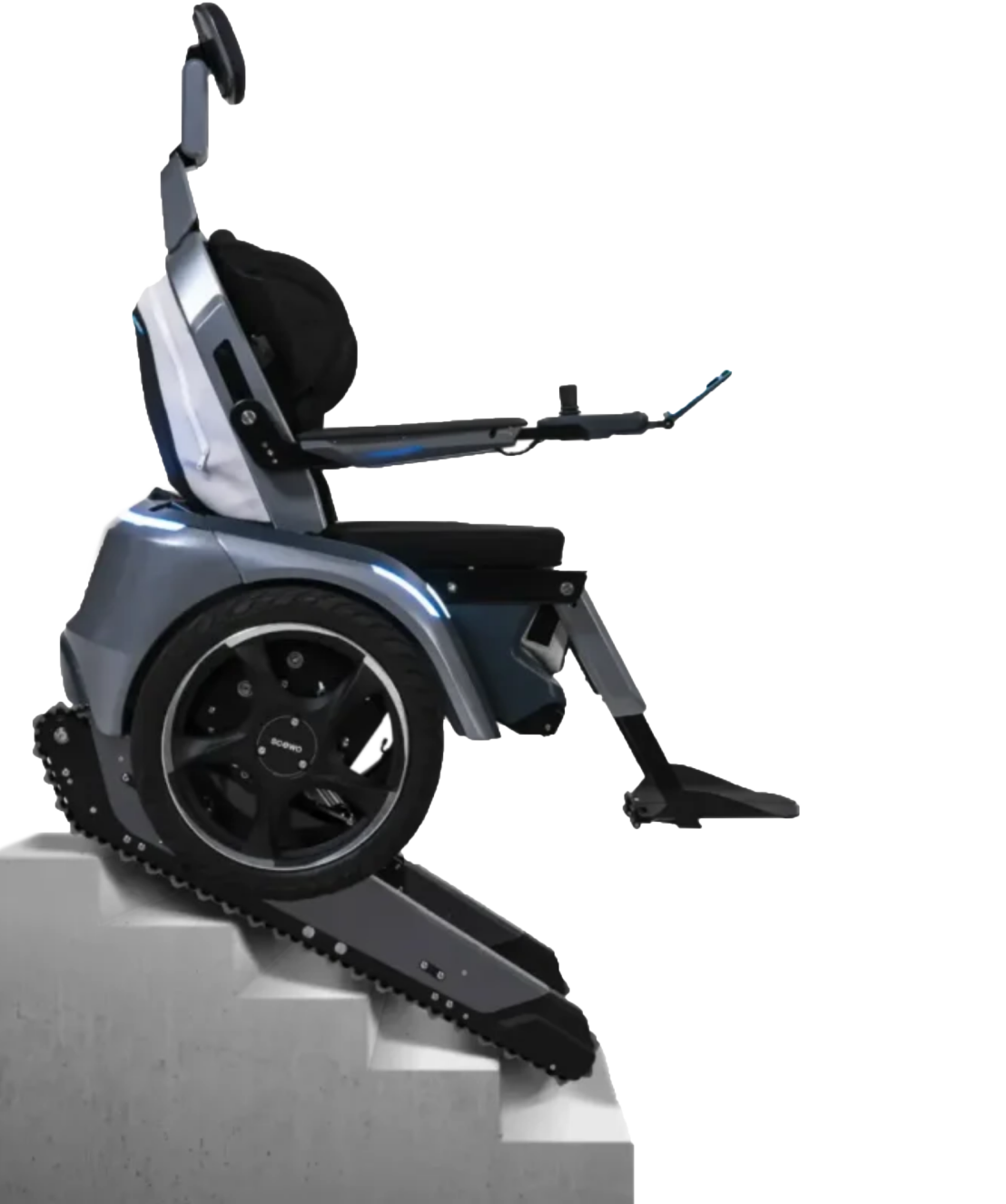
A wheelchair that also climbs stairs
The stair-climbing powered wheelchair, Scewo BRO balances on two wheels. This gives it enormous agility. Its caterpillar mechanism enables the user to climb stairs safely. The seat lift allows the user to adopt an elevated sitting position for a conversation at eye level or to access higher objects.
The Scewo BRO has its roots at ETH Zurich, where it successfully competed in the CYBATHLON. Scewo has sold over 200 devices to date and now has over 50 employees.
Revolutionizing Prosthetics
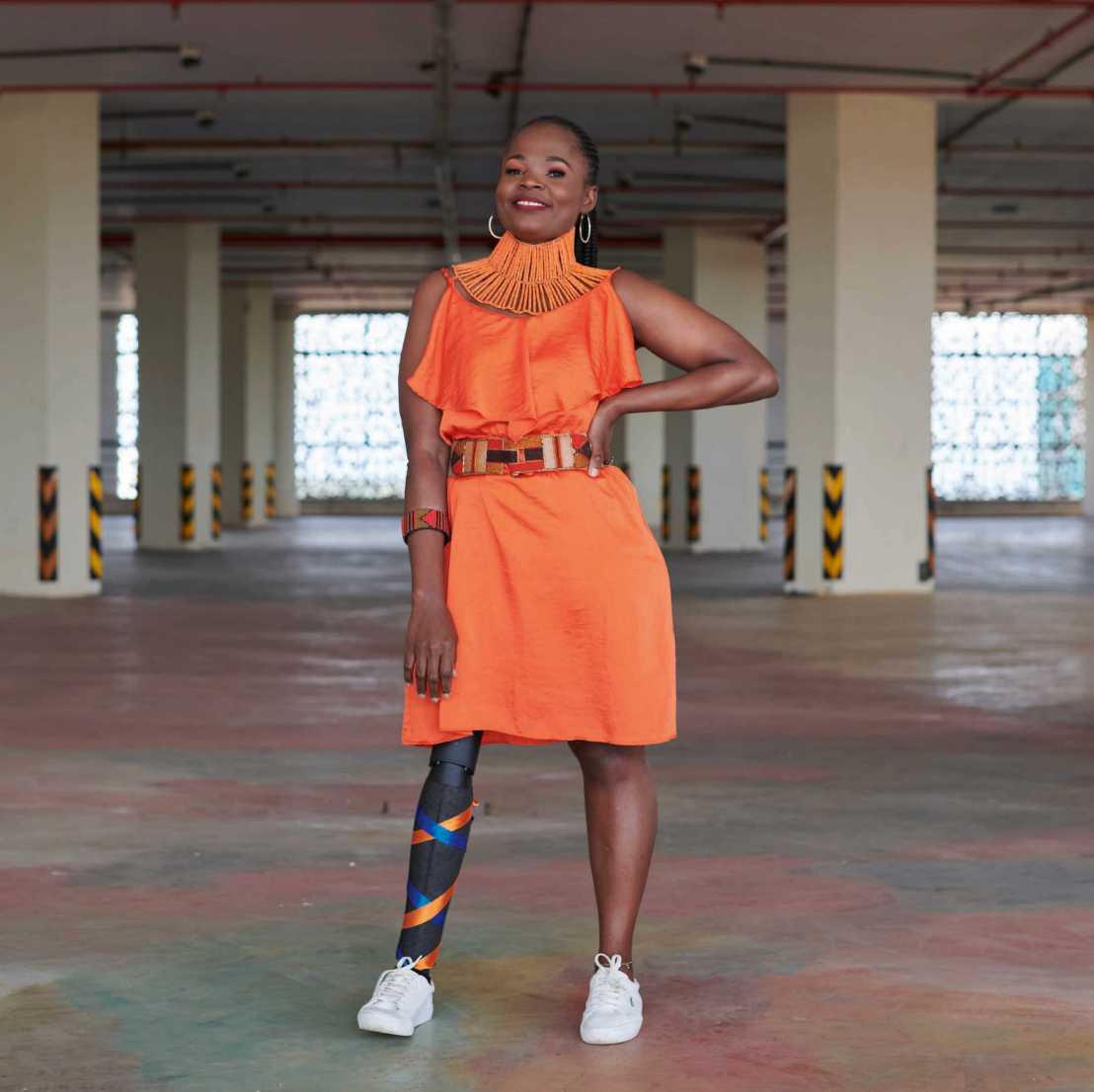
An estimated 65 million people worldwide are living with lower limb amputations. The majority of amputees in low- and middle-income countries are left without prosthetic devices because functional solutions are often unavailable or too expensive. The Circleg prosthesis is a high- quality, modular, functional, aesthetic and affordable prosthetic leg developed by a Kenyan-Swiss startup.
The system streamlines the fitting process with easy and quick adjustment options, requiring only simple tools.
Tough Rider Wheelchair
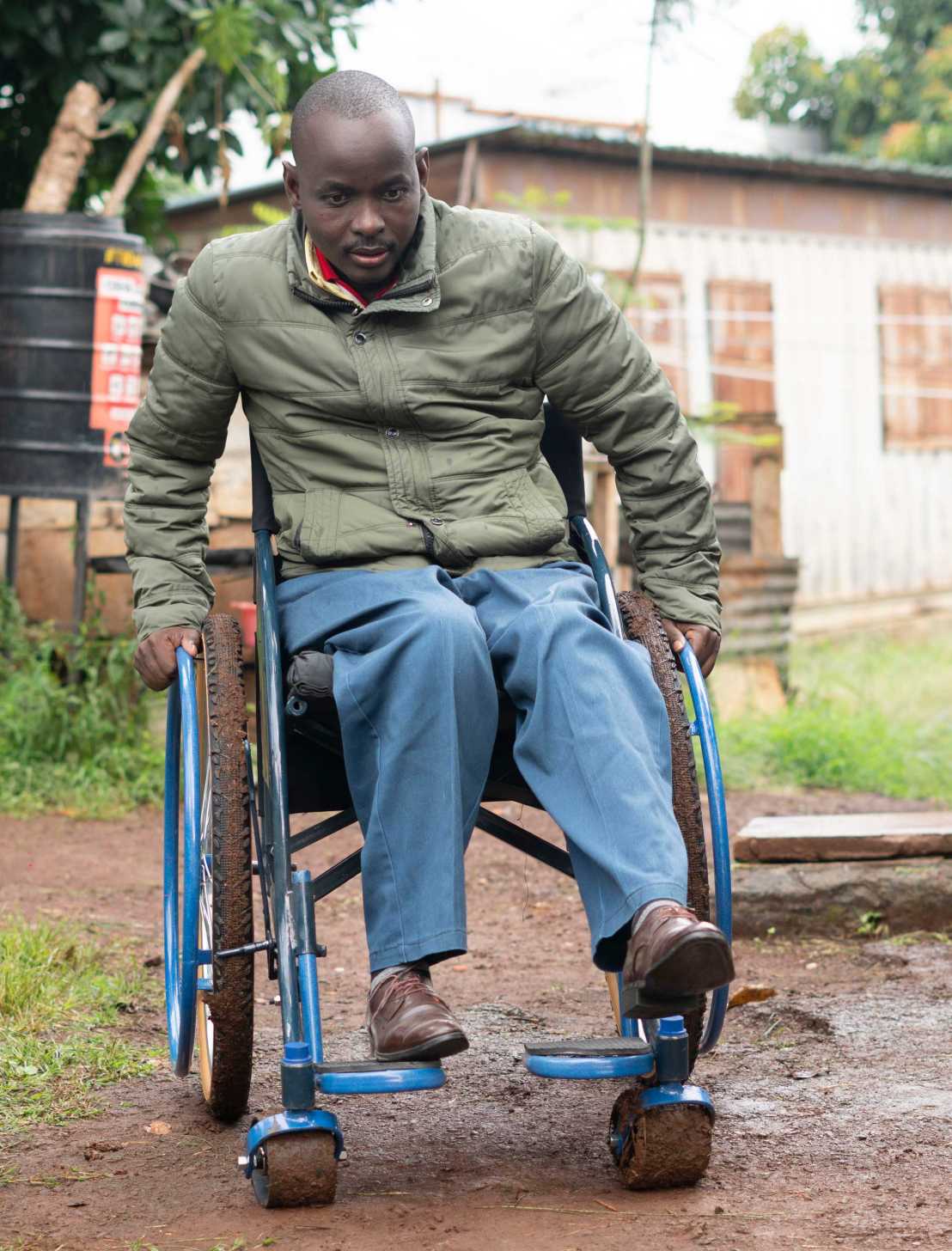
The supply of wheelchairs in low-income countries is largely insufficient. Wheelchairs are often imported and not adapted to local conditions. The non-profit “Association for the Physically Disabled of Kenya ( APDK )” has been working to improve the lives of people with disabilities since 1958. APDK produces 2400 wheelchairs a year, such as the “Tough Rider Wheelchair” on display here.
The wheelchair is designed for use in Kenya, adapted to the local terrain and produced with locally available materials, making it easy to maintain and repair. It is manufactured in their workshop in Nairobi by people with disabilities.
Project Imprint
Project management: Robert Riener
Inspiration: Basil Kräher
Concept: Robert Riener
Scenography: raumprodukt
Acknowledgements
Schweizer Paraplegiker-Stiftung, Verkehrshaus der Schweiz, SNSF Augora, FAULHABER SA, cereneo Schweiz AG, PluSport Behindertensport Schweiz, Invictus Active Limited, Sensomative GmbH, Scewo AG, ETH Foundation, ETH RESC, bodin.consulting
ETH students and staff members
Marco Bader, Desiree Beck, Alexander Breuss, Samping Bounlom, Dario Dittli, Marcial Egli, Sabina Eipe, Sarah Ellenberger, Nadine Favre, Manuel Fujs, Roger Gassert, Lucas Giesen, Alexandra Hees, Nico Herwegh, Michael Herold-Nadig, Sacha Huber, Olivier Lambercy, Mirko Meboldt, Singh Nishendra, Tom Reulein, Florian Schlechtriem, Stefan Schneller, Diana Siedler, Oliver Stoller, Michael Szalai, Peter Wolf
Technical implementation
ETH SMS Lab, ETH4D, ETH CYBATHLON, ETH RELab, ETH pd|z, FH OST, MEDICAL ENGINEERING CH GmbH, raumprodukt GmbH, D’Arc. Studio Associates Architects

